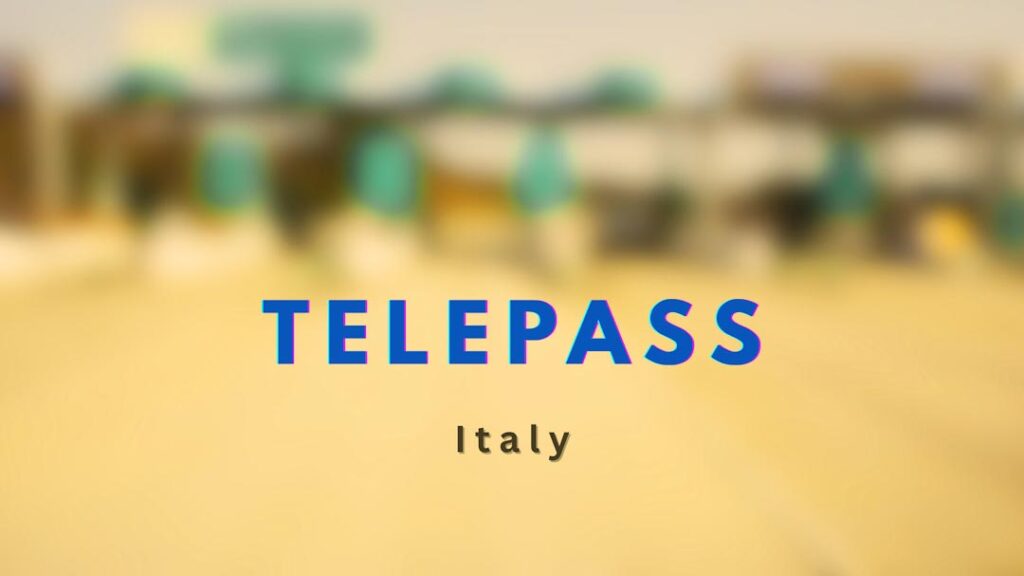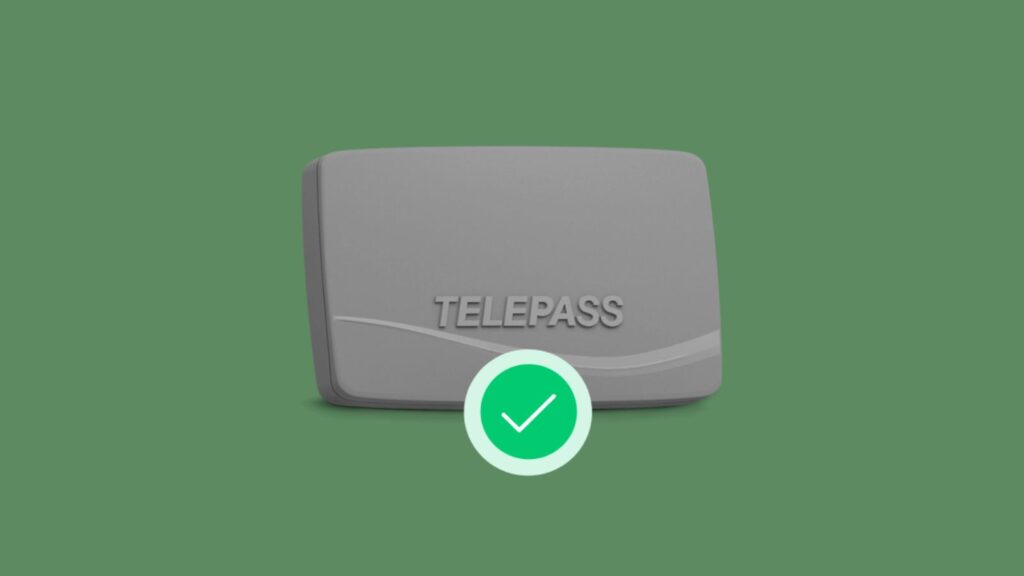
Telepass is Italy’s electronic toll collection system used on highways (autostrade). It allows drivers to pass through toll booths without stopping to pay manually. Instead, the toll fee is charged automatically to the user’s account.
In this guide we will look at costs, benefits and current alternatives to the Telepass service.
🔗 Learn more: Car Transport in Italy: A Guide for Foreigners
How does Telepass work?
Telepass is based on a small electronic device (transponder) that is placed inside the car, usually on the windshield. When you approach a toll booth:
- You drive into the yellow Telepass lane.
- The device communicates automatically with the toll gate system.
- The barrier opens without you needing to stop or pay.
- The fee is recorded and later charged to your account.
This system reduces waiting times and makes highway travel smoother, especially during busy holiday weekends.
Who can use Telepass?
Telepass is available to:
- Residents in Italy – Individuals and businesses can apply for a Telepass contract.
- Foreigners – Tourists and temporary visitors can also use Telepass by renting a compatible device from car rental companies.
For non-residents, Telepass is most often included as an option when renting a car. The rental company handles the billing.
How to get a Telepass
There are several ways to activate Telepass:
- Through Telepass official website or app – Subscription linked to your bank account or credit card.
- Via banks and post offices – Some banks and Poste Italiane branches offer Telepass services.
- At Punto Blu service points – These are official Telepass offices located along major autostrade.
- Through car rental agencies – Many rental cars in Italy come with Telepass pre-installed as an option.
A monthly fee usually applies, plus the cost of tolls.
Where can you use Telepass?

Telepass works on:
- Italian autostrade (highways with tolls).
- Some urban toll roads and restricted zones (e.g., Milan’s Area C).
- Certain parking facilities – Airports, train stations, and city car parks.
👉 For highway rules, see our guide on Autostrade in Italy.
Advantages of Telepass
- No stopping at toll booths – Saves time during trips.
- Convenience – Charges are automatic and tracked.
- Wider use – Works for parking and some urban areas.
- Travel efficiency – Especially useful for frequent highway users.
Disadvantages of Telepass
- Monthly subscription fee – Not ideal for occasional drivers.
- Limited benefit for short trips – If you rarely use the highway, manual toll payment may be easier.
- Foreign driver limitations – Visitors often cannot get a personal contract and must rely on rentals.
Telepass vs UnipolMove vs MooneyGo: Which Is Best in 2025?
Choosing between Telepass, UnipolMove, and MooneyGo in 2025 mostly comes down to cost and flexibility.
Telepass has the largest acceptance network and long-standing reliability, but its monthly fees and extra service charges make it the most expensive option.
UnipolMove is the strongest competitor, offering lower fees, simple online activation, and coverage on almost all major Italian motorways.
MooneyGo, while still expanding, is the cheapest option with a pay-per-use model that appeals to occasional drivers.
For most users, UnipolMove wins on value, Telepass wins on coverage, and MooneyGo is best for drivers who use tolls rarely.
Telepass with Rental Cars
Using Telepass with a rental car works differently than with a personal device.
Most major rental companies in Italy provide cars with a built-in telepass unit, but the convenience comes at a premium: you are usually billed tolls plus a daily service fee that can quickly exceed the cost of using your own device. If your rental does not include Telepass, you can still use the regular toll lanes or pay manually at exits.
Foreign visitors who travel frequently on toll roads should confirm rental costs in advance or bring a compatible personal device to avoid unexpected charges.
Alternatives to Telepass
If you don’t have a Telepass, you can still pay tolls by:
- Cash – Accepted at most booths.
- Credit/debit card – Inserted into the machine at the toll gate.
- Contactless payments – Available at newer toll booths.
However, these options often involve waiting in line, especially during peak traffic.
Key takeaways
- Telepass is Italy’s electronic toll collection system for highways (autostrade).
- It works via a small transponder that opens toll barriers automatically.
- Available for residents and tourists (mainly through car rentals).
- Can be activated online, through banks, Punto Blu, or rental agencies.
- Useful for frequent highway users, but less cost-effective for occasional trips.
Telepass makes highway travel faster and easier, but for occasional visitors, traditional toll payment methods may still be sufficient.
